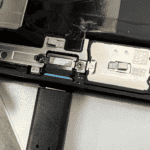Taking photos on your PC is easier than you might think. Windows 10 and 11 come with built-in tools that let you snap pictures quickly. You can take a photo on your PC using the Camera app or by pressing Windows key + Print Screen.
Want to capture memories or create content without a separate camera? Your computer’s webcam is a handy tool. The Camera app offers a user-friendly interface for taking photos and videos. It lets you adjust settings and save files with ease.
For quick screenshots, the keyboard shortcut is your best friend. Just press the right keys, and your screen image saves automatically. No need for extra software or complicated steps. Let’s explore how to use these features effectively.
| Method | Pros | Cons |
|---|---|---|
| Camera App | User-friendly, adjustable settings | Requires opening an app |
| Keyboard Shortcut | Fast, auto-saves | Limited to full screen captures |
| Snip & Sketch | Flexible capture options | Extra steps to save |
Preparing Your PC for Taking Photos
Before capturing images on your PC, ensure your device is properly set up. This involves verifying camera compatibility and choosing the right application for your needs.
Checking Camera Compatibility and Permissions
Most modern PCs come with a built-in webcam. If yours doesn’t, you can easily connect an external camera via USB. To check if your camera is working:
- Open Device Manager
- Expand “Imaging devices” or “Cameras”
- Look for your camera listed there
If you don’t see it, try updating drivers or connecting the USB cable to a different port.
Next, check your privacy settings:
- Go to Settings > Privacy > Camera
- Ensure “Allow apps to access your camera” is on
- Toggle on permissions for specific apps you want to use
Selecting the Right Camera App
Windows 10 offers a built-in Camera app, but you have other options too. Here’s a comparison of popular choices:
| App Name | Pros | Cons |
|---|---|---|
| Windows Camera | Pre-installed, simple interface | Limited features |
| Cyberlink YouCam | Advanced effects, face tracking | Paid software |
| OBS Studio | Screen recording, live streaming | Steeper learning curve |
For basic photo-taking, the Windows Camera app works well. Launch it by typing “Camera” in the Start menu.
If you need more features, consider third-party options. They often provide additional tools like filters, effects, and advanced settings.
Capturing Photos with Built-in Features
Windows offers simple ways to capture images using pre-installed tools. These methods let you take photos or grab screenshots without extra software.
Using Windows Camera App
The Windows Camera app is a user-friendly tool for taking photos with your PC’s webcam. To start, open the app by searching “Camera” in the Start menu.
Once open, you’ll see a live preview from your camera. Click the camera icon at the bottom to snap a photo. The app saves pictures automatically to your Pictures folder.
You can adjust settings like brightness and timer by clicking the gear icon. For selfies, use the flip camera button to switch to the front-facing camera if available.
The Camera app also lets you record videos. Just click the video icon to start and stop recording.
Taking Screenshots and Snips
Windows provides multiple ways to capture your screen:
- PrtScn key: Captures the whole screen to clipboard
- Windows + PrtScn: Saves a full screenshot as a file
- Alt + PrtScn: Captures only the active window
For more control, use the Snipping Tool:
- Press Windows + Shift + S
- Select an area to capture
- Edit and save the image
| Method | Capture Type | Saved To |
|---|---|---|
| PrtScn | Full screen | Clipboard |
| Win + PrtScn | Full screen | Pictures folder |
| Snipping Tool | Custom area | Clipboard (editable) |
These built-in tools make it easy to capture and save images on your PC without extra software.
Managing and Editing Your Photos
After capturing photos on your PC, organizing and enhancing them are key steps. Proper storage and editing tools help you maintain and improve your digital images.
Photo Storage and Organization
Windows 11 offers built-in options to keep your pictures organized. The Pictures folder serves as the default location for storing photos. You can create subfolders to categorize images by date, event, or theme.
To quickly find specific photos, use tags. Right-click an image, select Properties, and add tags in the Details tab. This allows you to search for photos by keywords later.
The Photos app in Windows 11 offers a timeline view. It automatically groups your pictures by date, making it easy to browse through your photo collection.
For cloud storage, consider options like Google Photos. It provides free backup and AI-powered organization for your photos and videos.
Editing and Enhancing Images
Windows 11 includes basic photo editing tools in the Photos app. To access them, open an image and click “Edit & Create” at the top of the window. Select “Edit” from the dropdown menu.
The Photos app allows you to crop, rotate, and adjust brightness and contrast. You can also apply filters to change the overall look of your images.
For more advanced editing, consider dedicated software. Adobe Lightroom Classic offers professional-grade tools for both organizing and editing photos. It provides extensive options for adjusting color, exposure, and detail.
Here’s a comparison of popular photo editing software:
| Software | Features | Best For |
|---|---|---|
| Windows Photos | Basic edits, filters | Quick touch-ups |
| Adobe Lightroom | Advanced editing, organization | Professional work |
| GIMP | Free, open-source | Budget-conscious users |
Remember to save edited photos in high-quality formats like JPEG or PNG to preserve image quality.
Advanced Tips for Professional Results
Taking professional-quality photos and videos on your PC requires mastering advanced techniques and tools. These tips will enhance your image quality and streamline your workflow.
Improving Video Quality for Recordings
Use digital zoom sparingly to maintain video clarity. Adjust your camera’s settings for optimal performance in different lighting conditions. Ensure proper framing by following the rule of thirds.
For crisp audio, invest in a quality external microphone. Position it close to the sound source and use a pop filter to reduce plosives. Test audio levels before recording to avoid distortion.
Enhance lighting with softboxes or ring lights to eliminate harsh shadows. Diffuse natural light with sheer curtains for a soft, flattering effect. Experiment with three-point lighting for professional-looking results.
Consider using a green screen for custom backgrounds in video conferences. This adds polish to your recordings and allows for creative flexibility in post-production.
Mastering Keyboard Shortcuts and Tools
Learn essential keyboard shortcuts to speed up your workflow:
| Action | Windows Shortcut | Mac Shortcut |
|---|---|---|
| Capture screen | Win + Shift + S | Cmd + Shift + 3 |
| Capture window | Alt + PrtScn | Cmd + Shift + 4, then Space |
| Paste screenshot | Ctrl + V | Cmd + V |
Utilize advanced screen capture software like Snagit for more control. These tools offer features such as scrolling captures and video recording with cursor effects.
Familiarize yourself with editing tools in your capture software. Use spot remover to clean up blemishes or unwanted elements in your images. Apply filters judiciously to enhance colors without overdoing effects.
Practice using layers and masks in photo editing software. This allows for non-destructive edits and precise adjustments to specific areas of your image.
Frequently Asked Questions
Taking photos on your PC involves various methods depending on your specific needs. From using built-in camera apps to capturing screenshots, Windows offers multiple options for image capture.
What steps are needed to capture an image using the camera on a Windows 11 PC?
Open the Camera app by searching for it in the Start menu. Click the camera icon or press the spacebar to take a photo. Your image will save automatically to the Pictures folder.
How can I take a screenshot on a Windows 10 computer?
Press the Windows key + PrtScn to capture the entire screen. The image saves to the Screenshots folder in Pictures. For more options, use the Snipping Tool to select specific areas.
Through which methods can a picture be taken on a laptop’s built-in camera?
Use the Camera app or third-party software. Some laptops have dedicated camera buttons. Check your laptop’s manual for specific instructions on accessing the camera.
What is the procedure for taking a photo with a PC’s webcam?
Open the Camera app. Ensure your webcam is connected and recognized. Click the camera icon or press the spacebar to capture an image. Adjust settings as needed for better quality.
Can you guide me on how to take a picture of my computer screen using keyboard shortcuts?
Press PrtScn to copy the entire screen to your clipboard. Use Windows key + PrtScn to save the screenshot directly to your Pictures folder. Alt + PrtScn captures only the active window.
What are the instructions for utilizing the camera on my PC to take photographs?
Launch the Camera app from the Start menu. Position yourself or the subject in frame. Click the camera icon or press spacebar to take the photo. Access your pictures in the Pictures folder under “Camera Roll.”
| Method | Action | Result |
|---|---|---|
| PrtScn | Press key | Copies screen to clipboard |
| Windows + PrtScn | Press keys together | Saves screenshot to Pictures |
| Camera App | Open app, click camera icon | Takes photo with webcam |






